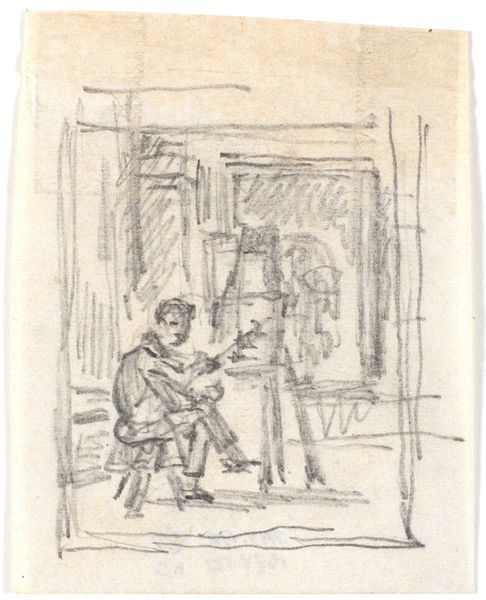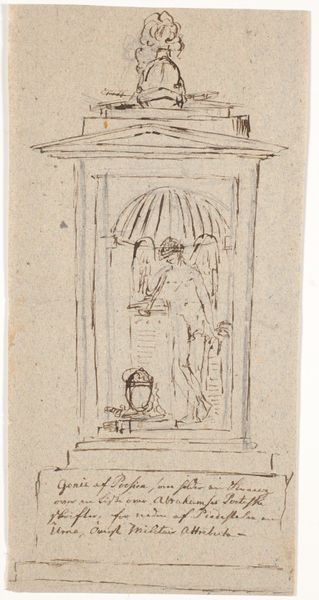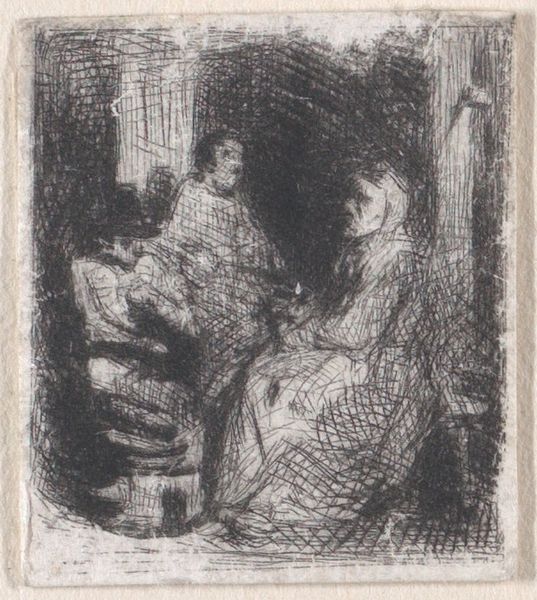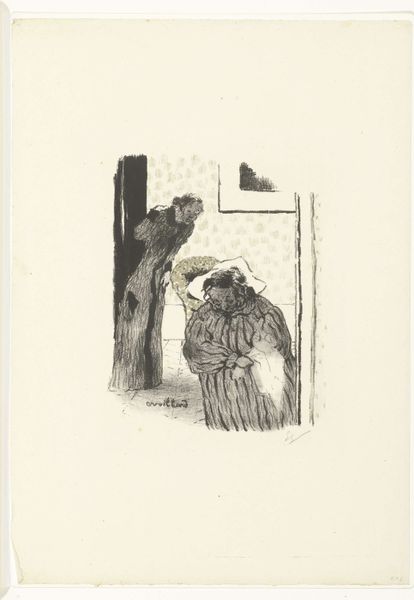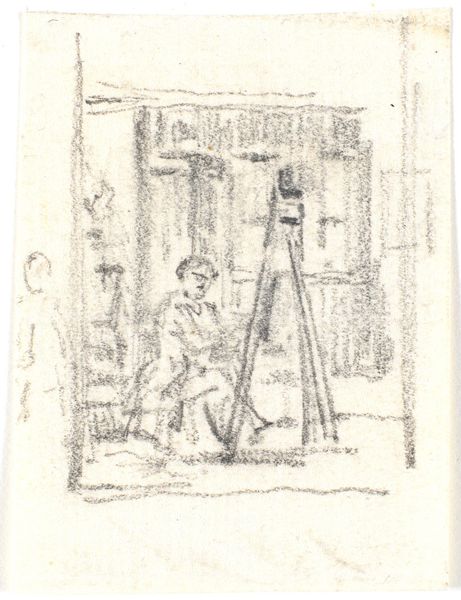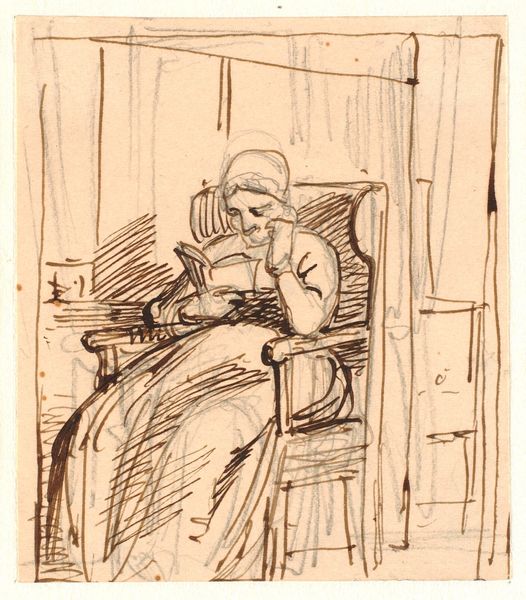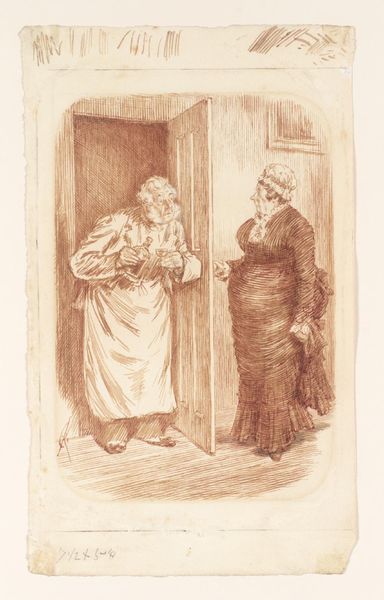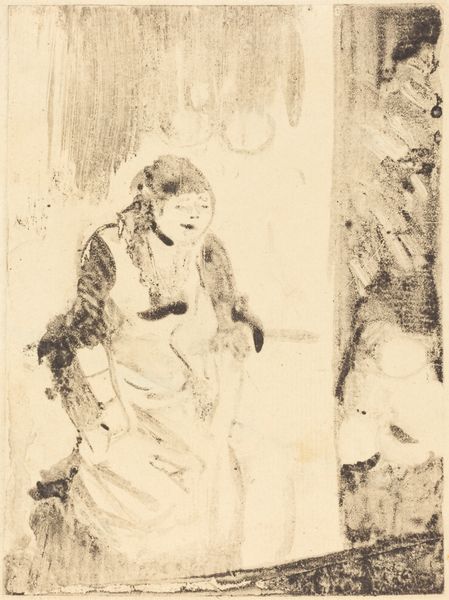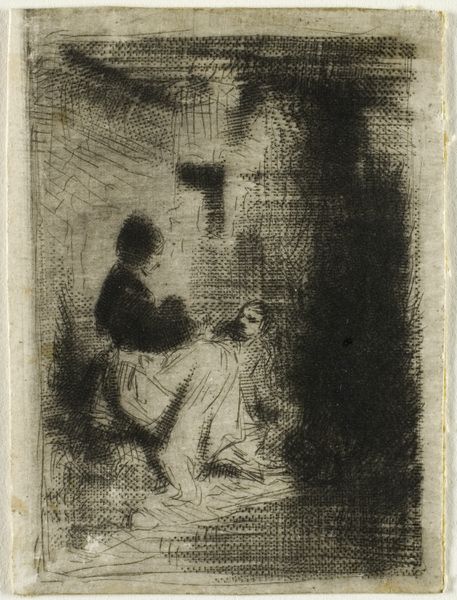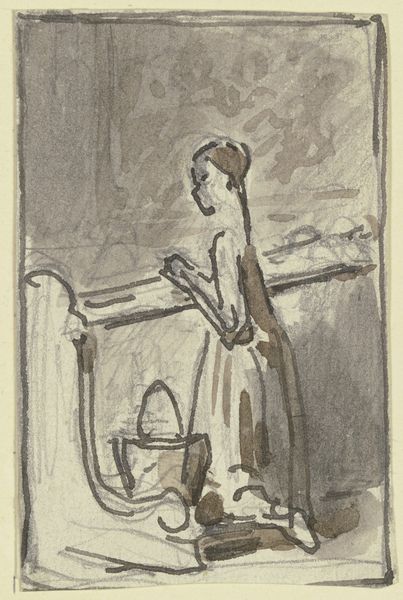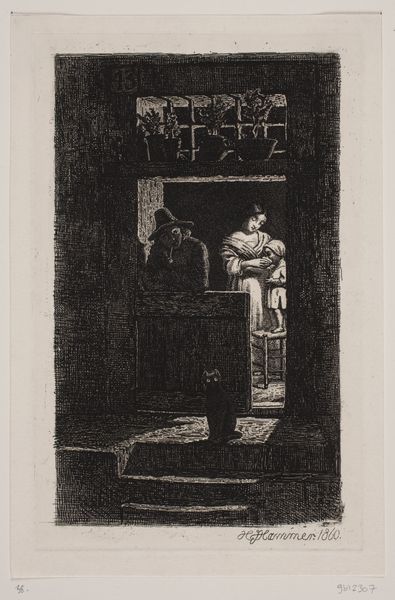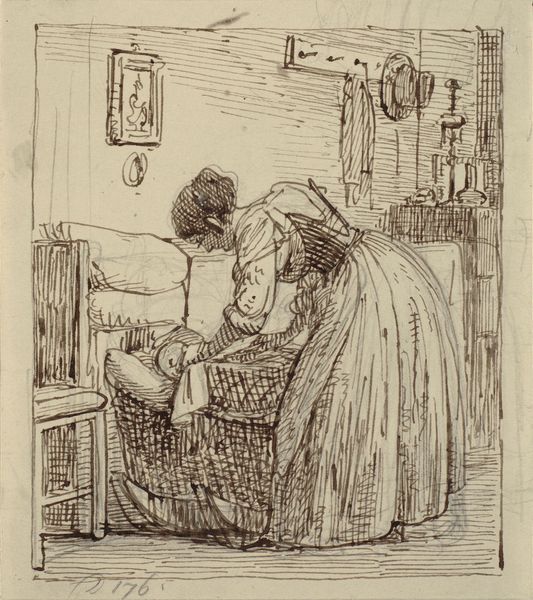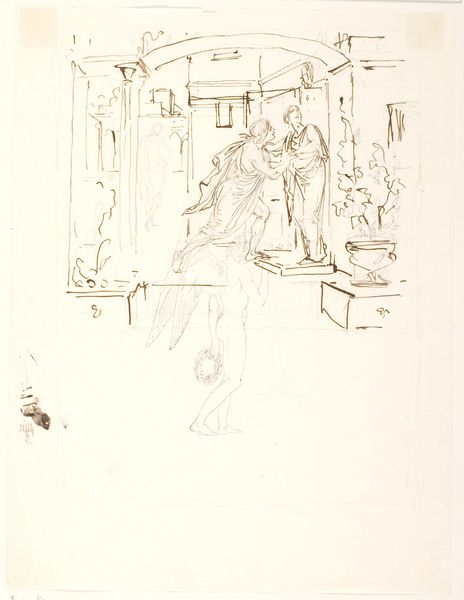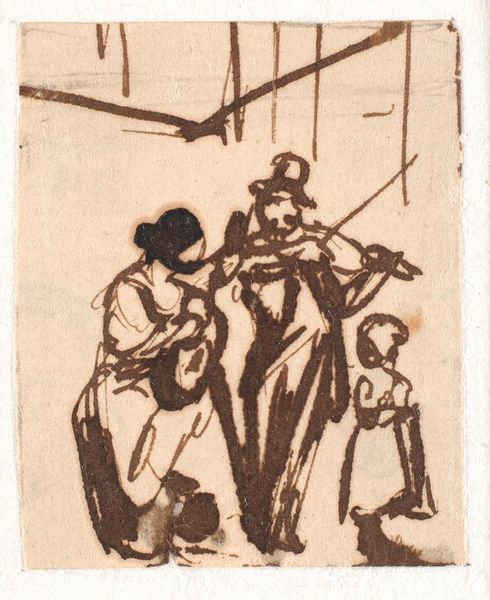
drawing, pencil
#
portrait
#
drawing
#
pencil
#
realism
Dimensions: 66 mm (height) x 45 mm (width) (bladmaal)
Curator: Here we have a compelling pencil drawing titled "En gejstlig ved en halvåben dør", or "A Clergyman at a Half-Open Door," created in the 1840s by Martinus Rørbye. Editor: It has such a hushed quality. The constrained palette of pencil on paper lends an air of stillness, of introspection. It's minimally rendered but very evocative. Curator: Absolutely. Rørbye lived through a period of religious and social upheaval, and this quiet interior invites us to contemplate the role of the church and religious figures during such transitions. How does the clergyman navigate a world on the brink of modernity? What power dynamics are implied by this encounter? Editor: Looking at the construction, the way Rørbye employs varied densities of hatching gives the drawing significant depth. Observe the solid, dark values defining the clergyman's robes contrasted with the more sparsely rendered door. The subtle lighting cues our perception of space; that doorway and shadowed figure feel tangible. Curator: Precisely, but consider too the social implications. The clergyman is shown at a threshold. The title identifies the half-open door. Is it a moment of potential access or, equally possible, limited opportunity? We could analyze his placement relative to the door within the broader societal framework of the period, asking about access, privilege, and who controls entry into sanctified spaces. Editor: The realist style is undeniably compelling, drawing the eye to surface textures, but the composition offers such intriguing patterns of light and shadow that serve to organize the forms within the frame. There is such exquisite balance of tone that invites my eye to explore, regardless of social narratives. Curator: I can agree that the composition evokes something intimate, but the historical context surrounding this image allows us to connect with questions regarding authority and the individual’s place within structures of power. Editor: Perhaps we can both appreciate the success of this artwork through our unique lenses, offering equally insightful reflections on the human condition. Curator: Indeed. Perhaps, in this image, we see both formal artistry and social narrative coalescing—revealing complex dimensions to Martinus Rørbye’s work.
Comments
No comments
Be the first to comment and join the conversation on the ultimate creative platform.
